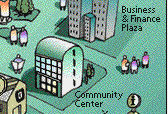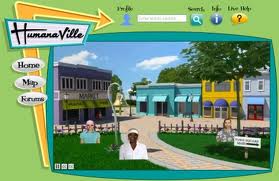Game On! Enliven Content with Game Dynamics
 Monday, November 21, 2011 at 5:39PM
Monday, November 21, 2011 at 5:39PM 
Anyone remember eWorld? It was Apple’s attempt to create a search engine that was visual and fun. It didn’t work out, but Apple was ahead of its time in the mid-1990s. Now the time may just be right for eWorld-like next-gen visual and fun business information services.
I spoke of the dual advantages of applying techniques from the online game segment to enhance the engagement level of content and to collect more data about audience at InfoCommerce Group’s Data Content11 conference earlier this month. The full presentation with video can be found here (minutes 4:30-12:32).
The presentation includes parallels from healthcare where companies like PatientsLikeMe are matching members of their patient community sites with relevant clinical trials. This is just one example of an online publisher that is serving as a matchmaker between its audience and researchers and creating value to all stakeholders as a result.
I saw eyes light up during my talk when I introduced the topic of applying game dynamics[1] to B2B and consumer health content to increase the engagement level and make the audience more valuable to researchers. A “game layer” for business and consumer health information may seem inappropriate at first glance, but I suggest that borrowing some of the best features of popular games to make content more engaging, easier to navigate, and more personalized can pay dividends. The secondary benefits of collecting more information about your audience and their preferences as they interact with more responsive content are significant, too. Again to use examples from healthcare, if your audience includes the leading experts in a specialty area or a large group of patients with a specific disease or set of symptoms, serving as a matchmaker between your audience and market research firms could represent a new revenue stream, especially if you have compiled data that can be used to segment the audience better than alternatives that currently exist.
I thought of eWorld when I saw HumanaVille, on online resource for seniors who are Humana members. As I mention in my presentation, I’m not sure that a fun visual online interface is the answer to getting seniors engaged online, but it’s worth a try, especially if the alternative is a typical online directory.

[1] For a primer on game dynamics, see this post: http://tomhumbarger.wordpress.com/tag/scvngr-game-dynamics-playbook/

